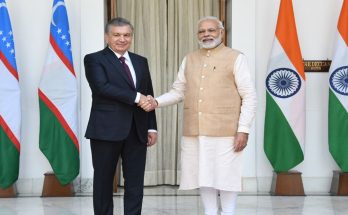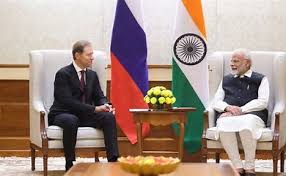 After a long delay, the government has finally announced the much awaited new foreign trade policy (FTP) 2015-2020. The thrust of the new policy is on export promotion, reducing trade transactions costs, e-commerce, services exports and ease of doing business. This policy is in sync with the government”s key initiatives of Make in India and other big ideas like Digital India. But the real test would be to bring about a real change on the ground in terms of quick and seamless implementation which would clearly signal that the economic reforms are back on track and working.
After a long delay, the government has finally announced the much awaited new foreign trade policy (FTP) 2015-2020. The thrust of the new policy is on export promotion, reducing trade transactions costs, e-commerce, services exports and ease of doing business. This policy is in sync with the government”s key initiatives of Make in India and other big ideas like Digital India. But the real test would be to bring about a real change on the ground in terms of quick and seamless implementation which would clearly signal that the economic reforms are back on track and working.
The new foreign trade policy is undoubtedly a novel attempt to boost India”s external sector and increase its share in world exports to 3.5 per cent by 2020 from 2 per cent in 2013-14. It also aims to increase India”s exports to $900 billion by 2020 from $312 billion in 2013-14. Another key feature of the policy is that it will not be revisited annually and will be reviewed only after two and half years to provide a stable policy framework for exporters. Thus, the new foreign trade policy not only provides the much-needed boost to Indian exporters but also re-affirms the fact that trade policy reforms constitutes the core of the country”s economic reforms.
The economic policy in India is increasingly driven by trade policy reforms which, over the last decade, have provided an export-friendly environment with simplified procedures conducive to enhancing export performance. The focus of these reforms has been on liberalisation, transparency and globalisation. Taking this further over the years, every successive government has made efforts to strengthen the export production base, remove procedural irritants and facilitate input availability. In this context, a few key features of the new foreign trade policy that are expected to a give a major boost to the external sector are as follows.
A key highlight of the new trade policy is that the government has done away with the plethora of schemes that existed for export promotion and announced a simplified policy. The policy collapses five earlier schemes for goods exports into one single scheme and has announced another programme for promotion of services exports. The scheme for merchandise goods exports has been named the Merchandise Exports from India Scheme (MEIS) and services programme is called the Service Exports from India Scheme (SEIS). These schemes are expected to give a major boost to forward shipments and boost services sectors like medical tourism and accountancy. It is expected that the exporters will gain much more from these two schemes which are different from the export promotion sops that existed in the earlier policy.
With the objective of giving a serious push to the Make in India initiative, the government has provided higher level of rewards under MIES exports with high domestic content and value addition. The government has also reduced the export obligation for capital goods purchased from Indian suppliers under the online casino Export Promotion Capital Goods Scheme which will give a major boost to the domestic capital goods industry. This initiative will help exporters develop their productive capacities for both domestic and international consumption.
An important element of India”s Foreign Trade have been the special economic zones which were announced with a lot of fanfare in April 2000. This was done with a view to attract larger foreign investments as well as to overcome the shortcomings experienced on account of the multiplicity of controls and clearances; absence of world-class infrastructure, and an unstable fiscal regime. However, the recently released report of the CAG has critiqued SEZ policy pointing out that they have failed to perform their stated purpose of job creation, and have been reduced in many instances to fraudulent land deals. Therefore, in an effort to revive the floundering special economic zones, the government has extended the incentive schemes for both goods and services (MEIS and SEIS) to units in SEZs as well. This has been done with the hope that this measure will give the much needed impetus to the development and growth of SEZs in the country.
Furthermore, the new policy, apart from focusing on rationalizing tariff structures to enable India to be a part of the mega regionals like Trans Pacific Partnership (TPP), has also emphasized on reviving the multilateral system led by the WTO. Commerce Minister Nirmala Sitharaman emphasized that the WTO rules envisage the eventual phasing out of all export subsidies. That is why the new policy is intending to reduce the number of export promotion schemes. This would finally help India phase out the export subsidies. This is considered to be essential to make Indian exports and services internationally competitive. Another area where India”s foreign trade suffers is its poor image because of the quality of its products. The Made in India brand is not well established outside. The new FTP has talked of focusing on quality and standards and make India brand zero defect products. However, the policy does not spell out specific measures to ensure and enhance quality.
Other positive features of the policy include an attempt to achieve greater policy coherence and mainstreaming of all export incentive schemes by the department of commerce. The department will now urge State governments to prepare their own export strategies based on the FTP to boost exports from States. Trade facilitation and ease of doing business by way of online filing of documents and emphasis on paperless trade is another good feature of the FTP.
Undoubtedly, the new foreign trade policy has made an earnest effort to boost India”s external sector and help prepare India to a rapidly changing global environment. In a developing country like India, services constitute one of the fastest growing sector, contributing to more than 50 percent of India”s GDP. Therefore, giving a boost to this sector is commendable. If China is considered to be the world”s manufacturing powerhouse, the same status is given to India in the service sector. Given this backdrop, the FTP has given a further leg-up to the service sector.
Now, the government should try to implement the new policy as quickly and efficiently as possible as it is time India started to make a mark on world markets. In this era of globalisation and marketisation, there is no substitute to export-led growth. Realising this, the new FTP has certainly given the right push and direction to India”s foreign trade. It is a welcome relief to see that economic reforms on the trade front are back on track and in full swing.
(The writer is a Senior Fellow at Observer Research Foundation, Delhi)
(courtesy: ORF)
Author Profile
- India Writes Network (www.indiawrites.org) is an emerging think tank and a media-publishing company focused on international affairs & the India Story. Centre for Global India Insights is the research arm of India Writes Network. To subscribe to India and the World, write to editor@indiawrites.org. A venture of TGII Media Private Limited, a leading media, publishing and consultancy company, IWN has carved a niche for balanced and exhaustive reporting and analysis of international affairs. Eminent personalities, politicians, diplomats, authors, strategy gurus and news-makers have contributed to India Writes Network, as also “India and the World,” a magazine focused on global affairs.
Latest entries
 India and the WorldNovember 26, 2025G20@20: Africa’s Moment – The Once and Future World Order
India and the WorldNovember 26, 2025G20@20: Africa’s Moment – The Once and Future World Order DiplomacyOctober 4, 2025UNGA Resolution 2758 Must Not Be Distorted, One-China Principle Brooks No Challenge
DiplomacyOctober 4, 2025UNGA Resolution 2758 Must Not Be Distorted, One-China Principle Brooks No Challenge India and the WorldJuly 26, 2025MPs, diplomats laud Operation Sindoor, call for national unity to combat Pakistan-sponsored terror
India and the WorldJuly 26, 2025MPs, diplomats laud Operation Sindoor, call for national unity to combat Pakistan-sponsored terror India and the WorldJuly 25, 2025When Fire Ends, Diplomacy Begins
India and the WorldJuly 25, 2025When Fire Ends, Diplomacy Begins







